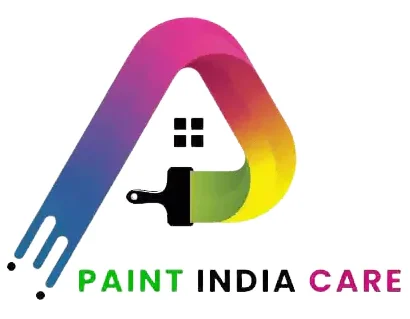How to Maintain Your Painted Walls for Long-Lasting Beauty
How to clean Painted Walls for Long-Lasting Beauty Your house can be radically transformed with a new coat of paint, giving the rooms a feeling of increased light, coziness, or space. However, after painting is complete, the issue becomes, “How do you keep those gorgeously painted walls looking like new for years to come? “Your painted surfaces can maintain their smoothness and sheen for a very long period with the correct maintenance. We’ll go over some simple maintenance tips and tricks in this piece to make sure you continue to enjoy the beauty of your painted walls for a very long time. Whether you hired painters or painted your walls yourself, these tips can help you keep them looking as good as new. 8 Ways to Clean Painted Walls Painted Walls for Long-Lasting Beauty 1. Regular Dusting and Cleaning Clean painted walls is often one of the easiest methods to keep them looking beautiful.Walls are susceptible to dust and filth buildup over time, especially in high-traffic areas like living rooms, kitchens, and hallways.Every few weeks, give your walls a thorough washing to keep their wonderful appearance and stop filth buildup. Techniques for Wall Dusting: Use a soft microfiber cloth or dusting mop to gently Clean Painted Walls. Proceed cautiously down the wall, taking note of every place you go, starting at the top. An excellent vacuum attachment with a gentle brush is perfect for cleaning uneven or hard surfaces. Regular wall cleaning extends the paint’s lifespan and improves the appearance of your walls. 2. Spot Cleaning Stains and Marks Smudges, stains, and marks on walls are inevitable, especially if you have kids, pets, or guests around frequently. Whether they are fingerprints, scuff marks, or food splatters, stains can be swiftly removed to prevent them from becoming permanent. How to Remove Paint Stains from Walls: For light stains, a damp sponge or cloth bathed in warm water works well most of the time. Being careful not to harm the paint, carefully wipe the area. To eliminate more tenacious stains such as oil or crayon marks, dilute a little quantity of dish soap with water. Apply the solution and give the affected area a light scrub with a soft cloth. Avoid using harsh chemicals and abrasive scrubbers as they may damage the paint and leave stains. After Cleaning Painted Walls, use a dry cloth to blot away excess moisture.Remember, the type of paint on your walls will determine how you clean them. Glossy and semi-gloss paints are more durable and easier to clean, while matte and eggshell finishes are more prone to scuffing and require extra care. 3. Address Minor Damages Promptly Over time, minor damages such as chips, cracks, and peeling paint may appear on your walls. While these issues might seem insignificant at first, they can worsen if left unattended, especially in areas exposed to moisture or direct sunlight. How to Repair Minor Paint Damage: For small chips or cracks, you can use touch-up paint to cover the blemishes. Ensure you have the original paint or a matching color on hand. If you notice peeling paint, gently scrape away the loose paint and sand the area until it’s smooth. Apply primer before repainting to ensure the new paint adheres properly. For larger cracks, use spackling paste to fill the area, sand it down once dry, and then apply a fresh coat of paint. By addressing these small issues as soon as they arise, you’ll prevent more significant damage and extend the life of your paint job. 4. Control Indoor Humidity Levels Humidity can be one of the biggest enemies of painted walls, especially in rooms like bathrooms and kitchens. High humidity levels can cause paint to peel, blister, or develop mildew over time. To maintain the quality of your painted walls, it’s crucial to keep indoor humidity under control. How to Manage Humidity: Use exhaust fans in bathrooms and kitchens to ventilate moisture during activities like showering or cooking. Invest in a dehumidifier if your home tends to retain moisture, particularly during humid weather. Regularly open windows to improve air circulation and reduce indoor humidity. Keeping humidity in check not only preserves your paint but also helps protect the overall integrity of your walls. 5. Avoid Direct Sunlight Exposure Painted walls exposed to direct sunlight can experience fading over time. UV rays can break down paint pigments, causing colors to lose their vibrancy. While it may not be possible to eliminate sunlight entirely, there are steps you can take to minimize its impact. How to Protect Painted Walls from Sunlight: Use curtains or blinds to shield walls from direct sunlight during peak hours of the day. Opt for UV-protective window film to reduce the sun’s impact without blocking natural light. Choose high-quality, UV-resistant paints for rooms with significant sunlight exposure to minimize fading. These preventive measures can help keep your paint colors looking as fresh as the day they were applied. 6. Use Paint That’s Easy to Clean Choosing the right paint finish can make a big difference in how easy it is to maintain clean painted walls. If you haven’t painted yet or are planning to repaint, consider selecting paints with finishes that offer durability and easy maintenance, especially in high-traffic areas. Recommended Paint Finishes for Easy Cleaning: Semi-gloss and gloss finishes: These are highly durable and ideal for areas like kitchens, bathrooms, and trim. They’re easy to clean and resistant to moisture. Satin finishes: This offers a balance between durability and subtle sheen, making it great for living rooms, hallways, and bedrooms. Matte and eggshell finishes: While these give a smooth and non-reflective appearance, they can be more challenging to clean. If you choose these finishes, be sure to use high-quality paints that are washable. For a paint job that stands the test of time, selecting the right finish is just as important as proper maintenance. 7. Schedule Routine Touch-Ups No matter how careful you are, high-traffic areas such as hallways, stairwells, and kids’ rooms are bound






